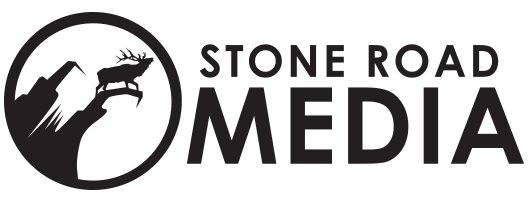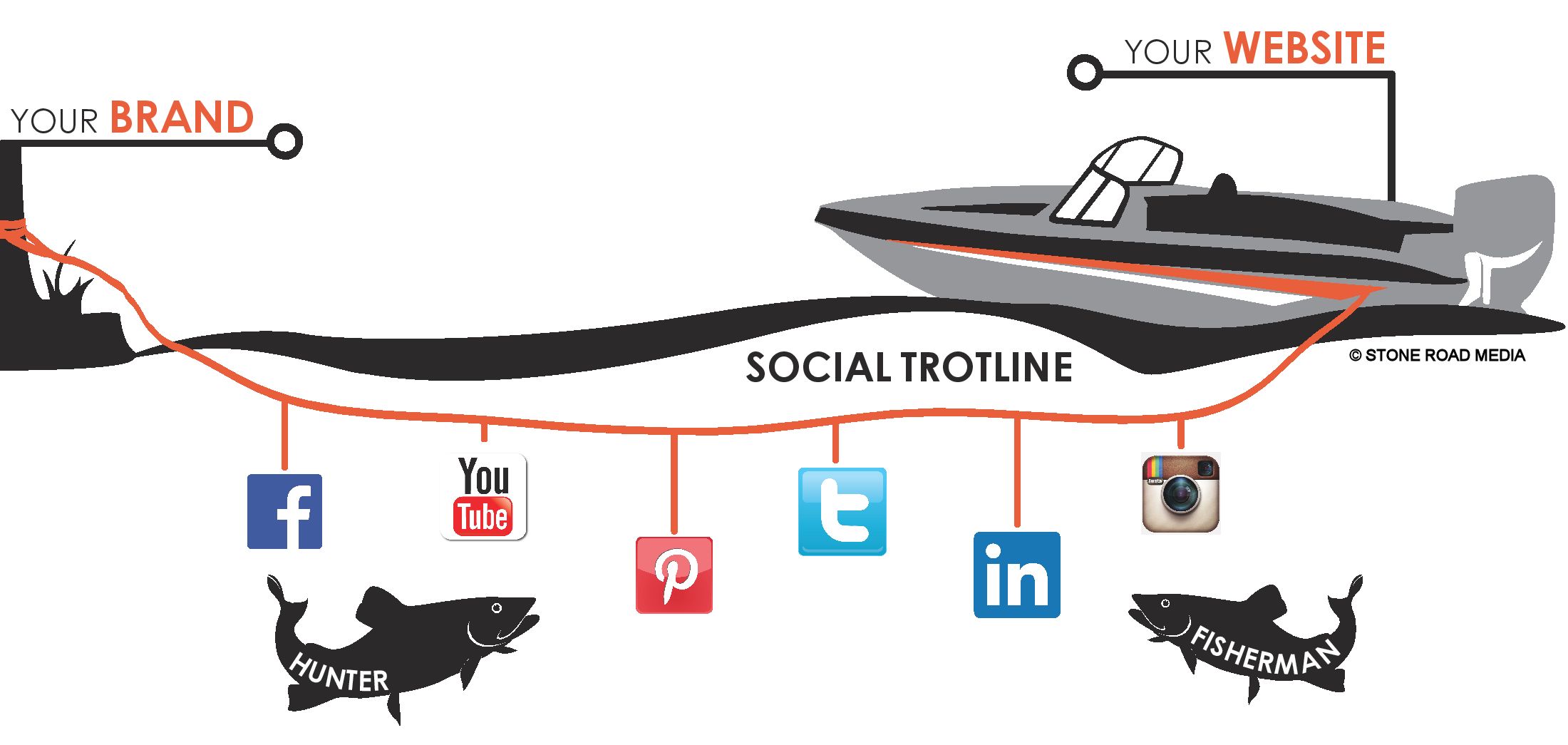Engage With More Outdoorsman on Social Media | Social Trotlining
Engage With More Outdoorsman on Social Media | The Art of Social Trotlining™
By Jeremy Flinn, COO, Stone Road Media Group
It’s rare to find a person, let alone a business without at least one social media account. Social media platforms have allowed business owners, both large corporations and small start-ups, to engage with potential customers in nearly real time. Whether you are simply trying to increase the amount of traffic to your website, or operate an eCommerce site in which every engaged lead could become your next paying customer social media is a critical tool in today’s internet marketing. Many outdoor industry companies have caught onto the Facebook and Twitter fad, which is about as far as their inbound marketing strategy, in particular Social Media Optimization (SMO), extends. Though these tend to be the easiest places to engage with outdoorsman, any company only engaging on these two platforms is dramatically cutting their consumer reach. The challenge for our industry is to understand the need for multiple social media platform accounts, and even more important to paint a strategy that we can easily understand. It was for these two reasons that drove our inbound marketing company, focusing on outdoor-oriented businesses, to create the concept of Social Trotlining™.
The Social Trotline™ | Creating an Engaging Social Media Pipeline
For most of you from the South and Midwest, “trotline” is likely a familiar term. A form of fishing, a trotline is a set in slow-moving rivers or streams typically targeting species like catfish. The set is made when a main line, which could be anything from rope or twine to heavy-duty, monofilament fishing line, is attached to a permanent or weighted structure like a tree, pier, or cinder block on both ends. Then several individual, hook sets, or leaders, are attached to the main line and baited often with different baits providing target fish a variety of choices. The goal is to provide the targeted fish species with multiple options in a specified range which in theory increases the odds of not only a catch but multiple catches. The best part is it can be left relatively unattended once set, only checking periodically for catches.
Social Trotlining™ utilizes the exact same principles of the fishing technique. A brand (Main Line) determines its target consumer and then sets up a myriad of social media accounts (Leaders) including Facebook, Twitter, LinkedIn, YouTube, Google+, Pinterest, and Instagram. These accounts lay out a variety of digital content (Bait) that a potential lead can come through or “be caught.”
When an outdoor industry company makes a social media post on Facebook or Twitter, it’s like casting out a single rod. Although multiple outdoorsmen can be caught over time with the digital content it is very one-dimensional, and often limiting in impressions. Think of Facebook’s “News Feed” for a minute. Say your company posts a piece of digital content announcing that one of your pro staffers just harvested a Boone & Crockett whitetail. You make the post at noon during a weekday. For most people’s Facebook News Feeds the post will be buried within a couple hours unless it is “Liked” and “Commented On” a lot.
Keeping the Social Trotline™ Productive | Recurring Website Leads and Traffic
Whether you are operating a simple traffic- based or eCommerce website, the only way to continually drive targeted visitors and leads to the website is through compelling, original content. Social Trotlining™ not only increases the effectiveness of a company engaging with targeted consumers, but it also builds the companies standing as a whole in the internet universe. When you post engaging and compelling digital content on social media platforms, and people engage, Google and other search engines recognize this, particularly if it is coupled with traffic coming back to your website. Google is obviously the top-dog in the search engine realm. Whether you know it or not, Google and Facebook do not play nice together. For instance, Google weighs more page ranking results when they see you engaging with audiences in Google+ and YouTube, two companies in which they own. So by engaging in those platforms more, you will slowly see your digital content and website creep up the page ranking on Google’s SERPs (Search Engine Results Page). In the same scenario, if you upload a video from YouTube into Facebook, you may only reach about 1/10th of the impressions you would have if you uploaded it directly into Facebook. Covering all your social media platforms and engaging with audiences uniquely in each will maximize the effectiveness of your Social Trotline™.
The best part of Social Trotlining™ is that it is no more work than posting to Facebook or tweeting to Twitter! With specialized Apps like HootSuite and EveryPost, you can create a single post and “Push” it to all of your social media accounts. So like running an actual trotline, there is minimal work once the initial accounts are established other than monitoring the analytics of leads coming through and refreshing the platforms with new “bait,” or compelling digital content.
Monitoring Your Social Trotline™ | A Good Visitor Is One That You Know Well
Just because someone comes to your website from Social Trotlining™ does not mean that they are a viable lead or consumer. Before you even begin to engage with audiences on social media, you should identify your “premier lead/consumer”. If you’re a B2B (Business to Business) based company, what are the characteristics of a company that would be considered a premier lead? It becomes much harder for B2C (Business to Consumer) based companies, that may have a wide range of personas that are all considered consumers.
Monitoring the number of visitors and types of visitors based on your Social Trotlining™ and digital content is critical to progress as a business. What worked? What seemed to draw the “wrong crowd”? This tends to be the most missed opportunity for businesses, particularly in the outdoor industry. Fortunately, inbound marketing agencies, like Stone Road Media, have been created to develop, execute, and monitor the social media efforts of companies. It requires a lot of time, trained professionals who understand social media and internet behaviors, and usually specialized tracking and engaging marketing software, like HubSpot.
Whatever you choose to do with your social media strategy, remember this is an immense source for generating online leads and sales. Engage users on all social media platforms, and create compelling, original digital content. Copying content from other sites is a Google “death sentence,” so do not even think of taking a shortcut. Inbound marketing is the “Now,” the return on investment is off the charts and is accurately measurable unlike many traditional marketing strategies.
For more information on Stone Road Media and its Inbound Marketing Solutions, check out the new Media and Marketing Kit
Jeremy Flinn is Chief Operating Officer for Stone Road Media Group. A wildlife biologist, digital content expert, and outdoor industry veteran in internet marketing and business development, he has launched and advised several successful outdoor industry businesses.


